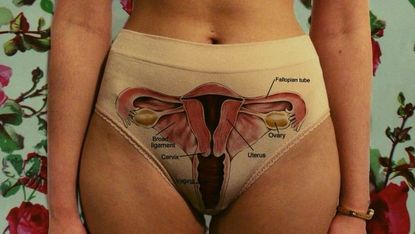
We knew this day would come. Yes, somewhere deep inside we knew that one day someone would create a pair of anatomically correct vagina underpants. How did we know this? Because when we were little, boys would walk around with Superman or Batman logos emblazoned smack dab on the middle of their junk (perhaps this is what led to the false pretense of considerably-sized manhood, and later the overcompensation for it), and girls would be stuck with the days of the week or flowers. So it's happened. An artist, Eleanor Beth Haswell through her 'Why Are You So Afraid of Your Own Anatomy?' art collection fashioned a bra to look just like bare nipples and a pair of undies with a graphical diagram of a woman's reproductive anatomy--a vagina blueprint, if you will. Pay attention, guys.
Anatomically correct underwear from the collection 'Why Are You So Afraid of Your Own Anatomy?'

Nipple bra from the collection 'Why Are You So Afraid of Your Own Anatomy?'
Shock and awe aside, the message that Haswell is trying to convey is an important one. "Throughout history we, as women, have fought to break loose from the preconceived image of how we should act in society in order to be our own person, with notions and beliefs that we've formulated ourselves," says Haswell. Keeping company with Christopher Kane's Spring/Summer 2014 runway collection, Cara Delevigne's 'Free the Nipple' campaign, and even in Orange is the New Black where it became evident that the majority of inmates didn't know the layout of their own anatomy, the artist thinks that these social stereotypes need to continue to be challenged. Men can freely walk around without a shirt and women are shamed, even sued, for the slightest nip slip (we're looking at you, Janet Jackson). We couldn't agree more.
Christopher Kane Spring/Summer 2014 Ready-to-Wear Collection
We emailed the 18-year old artist to find out more about her current and previous collections and how feminism plays a part through all of it.
Marie Claire: What inspired you to create this set?
Eleanor Beth Haswell: As I was focusing on an art project based on body shaming at the time, I began to notice a lot more shaming online, especially in the UK. It's the nipple that's deemed to be the issue, the fact that both men and women have them yet a woman's must be censored. I just don't understand how people claim that we don't need feminism, but are offended by something as innocent as the nipple, and are happy to create a divide to suggest that a woman who does what she wants with her body is unacceptable. Why is there this divide between genders? The amount of negative comments, suggesting people are 'easy', suggesting people don't have respect for themselves, all from showing a piece of their body that everyone has and shouldn't be afraid of. This piece isn't being gender specific, suggesting that all women have this particular anatomy, it was a question on anyone who chooses to shame women, those who would find it acceptable to wear a bra that would almost look like a breast from a distance, but be relieved at the thought of a woman being covered up. Those who think there is a major difference between the acceptance of a man's chest to a woman's. And to those who are happier for one gender to do what they want, be with who they want and show what they want over another.
Stay In The Know
Marie Claire email subscribers get intel on fashion and beauty trends, hot-off-the-press celebrity news, and more. Sign up here.
MC: You began a female-identified art collective. Why did you decide to start it and how it came to fruition?
EBH: It was formed to make a place where young girls can be a part of an art scene and share their work, and host exhibitions where other young girls are welcome. The idea of a female-identified collective helps to create a safer space for young artists with similar ideologies to work alongside one another. The name Clandestine has the meaning 'kept secret or done secretively, especially because illicit', which fits quite well in comparison to women's art. Originally there were 4 members, but we received applications from other artists and we now have seven girls working in the collective. So far we have had one exhibition, titled "And So, The Flowers Bloomed".
MC: The word "feminism" seems to be at the heart of everything you do. What does it mean to you?
EBH: Feminism to me is equality between all genders. Anyone can be a feminist, not just women like some people are lead to believe. For me, it is the overall belief that you shouldn't be judged on what you do or what you wish to achieve by your gender, and is one of the most important things that we need in society.
I've always thought that the way women are viewed in society isn't right, but it only really hit me around this time last year, when I started to focus on feminism for my college courses. We can look anywhere today and women are constantly being exploited and criticized online, in music videos, and even in the media. We can see articles about women in countries all over the world still being stoned to death for alleged adultery. There is constant victim blaming on women for dressing how they want to dress as they get branded with the 'asking for it' label. It's appalling knowing that the ones who suffer are the ones who are blamed.
MC: Tell us why you focused on body shaming.
EBH: I decided to cover body shaming in two of my art projects, and hope to continue with the theme for my future work. Being in an environment where students around me are constantly shaming young girls for what they choose to do with their bodies is beyond me. We are living in the 21st century and women are still being pressured to remove all body hair to be deemed attractive. The media and society both have a huge impact on girls from a really early age, stressing that they must live up to these expectations and it should not be the case. It's down to personal choice.
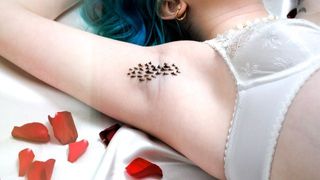
From the artist's art project on body hair
MC: You also did a domestic violence project. Tell us about it.
EBH: The piece "I Respect Pieces of Shit More Than You" was something massively influenced by my personal experience. In a few of my pieces from this project I used writing on a mirror to portray a message. My intention was to have these messages being reflected, focusing not only on the physical abuse within a domestic relationship, but also the mental, and how it has an effect on the victim. Some pieces, including "It All Goes Unnoticed" highlight upon the victim blaming in today's society, and how people usually turn a blind eye.
MC: Do you think it's possible to define beauty?
EBH: It is impossible to define beauty, everyone's idea of beauty is completely different, and rightly so. I don't know why anyone would want to live in a world where everyone's idea of beauty is the same. I believe beauty differs so much from person to person, that it can't actually be defined as it only exists on a personal level for each and every individual. As long as people are comfortable with how they want to portray themselves no definition is really needed.
Related:
Up Your Culture IQ: The Best Vintage Looks Inspired By Charles James
10 Signs You're a Feminist
Scout Willis in NSFW Topless Protest at Instagram's No-Nipple Policy
Photo Credits: Courtesy of Eleanor Beth Haswell; Imaxtree
-
 Princess Diana Revealed to a Royal Author the Real Reason Why Her Marriage to Prince Charles Ended Not Long Before She Died in 1997
Princess Diana Revealed to a Royal Author the Real Reason Why Her Marriage to Prince Charles Ended Not Long Before She Died in 1997And no, it apparently wasn’t Camilla Parker-Bowles.
By Rachel Burchfield Published
-
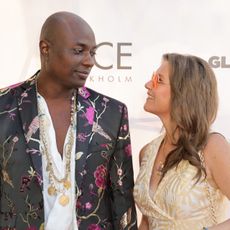 Princess Martha Louise of Norway Sets Wedding Date with Fiancé Shaman Durek Verrett After a Two Year Engagement
Princess Martha Louise of Norway Sets Wedding Date with Fiancé Shaman Durek Verrett After a Two Year EngagementAlready billed as “one of the most beautiful high society weddings of the year,” the celebration will last for four days.
By Rachel Burchfield Published
-
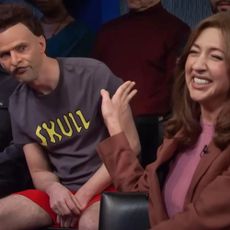 Heidi Gardner Opens Up About Viral Moment She Broke Character During ‘Saturday Night Live’ Beavis and Butt-Head Sketch
Heidi Gardner Opens Up About Viral Moment She Broke Character During ‘Saturday Night Live’ Beavis and Butt-Head Sketch“I just couldn’t prepare for what I saw.”
By Rachel Burchfield Published
-
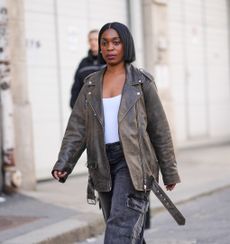 Stylists on Why Leather Jackets Are a Great Investment
Stylists on Why Leather Jackets Are a Great InvestmentFashion insiders weigh in on their favorite styles.
By Lauren Tappan Published
-
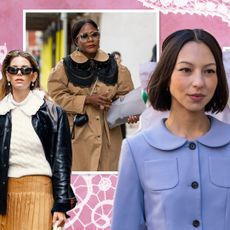 Grown-Ups Are Rediscovering the Charm of Peter Pan Collars
Grown-Ups Are Rediscovering the Charm of Peter Pan CollarsFrom bibbed button-downs to round-neck leather jackets, this year's takes feel more sophisticated than sweet.
By Emma Childs Published
-
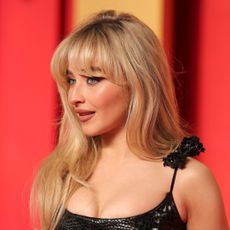 Sabrina Carpenter Wears Vintage Victoria's Secret Lingerie to Tease Upcoming Coachella Performance
Sabrina Carpenter Wears Vintage Victoria's Secret Lingerie to Tease Upcoming Coachella PerformanceHer look was pulled from the brand's 1997 archives.
By Lauren Tappan Published
-
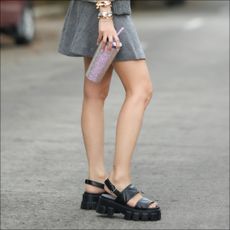 The Best Chunky Sandals Prove Minimalism Is Out
The Best Chunky Sandals Prove Minimalism Is OutAnother footwear trend embracing maximalism in 2024.
By Lauren Tappan Published
-
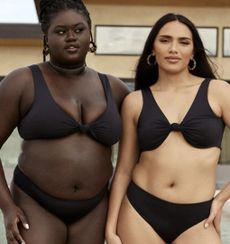 The Brands to Shop for the Best Swimsuits
The Brands to Shop for the Best SwimsuitsFrom size-inclusive labels to sustainable and designer options, this list is all-encompassing.
By Lauren Tappan Published
-
 The Best Vacation-Worthy Beach Dresses
The Best Vacation-Worthy Beach DressesFrom barely-there to playful fringe.
By Lauren Tappan Published
-
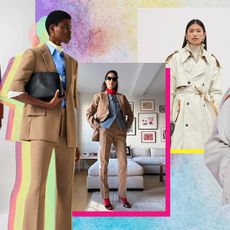 Could a 'Shirt Sandwich' Pull You Out of a Fashion Rut?
Could a 'Shirt Sandwich' Pull You Out of a Fashion Rut?The gourmet styling trick may help you fall back in love with your wardrobe.
By Emma Childs Published
-
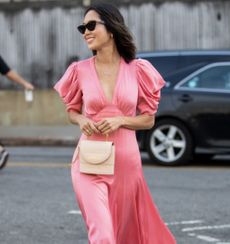 The Best Spring Dresses Simplify Any Outfit Formula
The Best Spring Dresses Simplify Any Outfit FormulaStyle this wardrobe staple for any occasion, from farmer's markets to formal affairs.
By Lauren Tappan Published